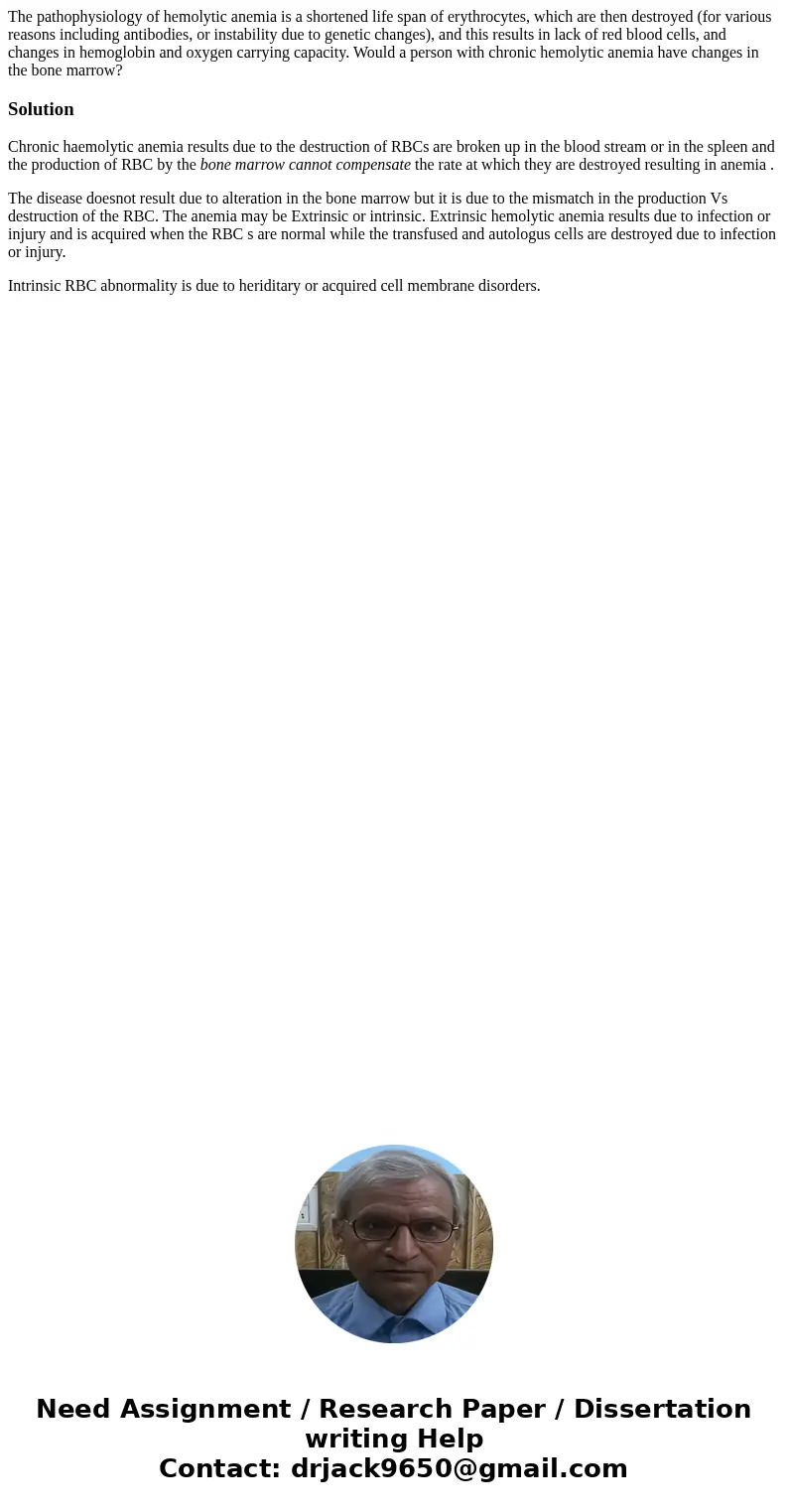The pathophysiology of hemolytic anemia is a shortened life
The pathophysiology of hemolytic anemia is a shortened life span of erythrocytes, which are then destroyed (for various reasons including antibodies, or instability due to genetic changes), and this results in lack of red blood cells, and changes in hemoglobin and oxygen carrying capacity. Would a person with chronic hemolytic anemia have changes in the bone marrow?
Solution
Chronic haemolytic anemia results due to the destruction of RBCs are broken up in the blood stream or in the spleen and the production of RBC by the bone marrow cannot compensate the rate at which they are destroyed resulting in anemia .
The disease doesnot result due to alteration in the bone marrow but it is due to the mismatch in the production Vs destruction of the RBC. The anemia may be Extrinsic or intrinsic. Extrinsic hemolytic anemia results due to infection or injury and is acquired when the RBC s are normal while the transfused and autologus cells are destroyed due to infection or injury.
Intrinsic RBC abnormality is due to heriditary or acquired cell membrane disorders.

 Homework Sourse
Homework Sourse